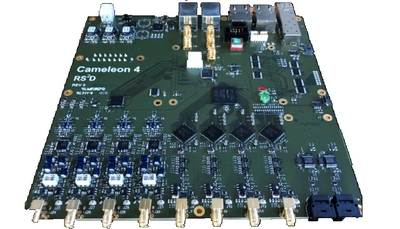Results
Gamma MRI overall architecture

Gamma MRI is a combination of an MRI system with additional gamma detection. As a result, the overall architecture is composed of these two main subsystems: low magnetic field MRI and gamma detectors. Two consoles linked by a synchronization mechanism ensure tight integration of both system components.
Detectors
The gamma detectors fit inside openings made inside the magnet structure. To determine the optimal detector features, different simulations are carried out, with different variable parameters, so as to reach a final optimal design that meets the original requirements in the most effective way.

The Magnet
The magnet was custom-built based on the exact specifications provided by the consortium. However the shims and gradients were built internally by us because we could not find a supplier able to do the work.

Work in the Laboratory
ISOLDE beamline is used for collecting different radioactive samples. In Gamma MRI, it is used to collect xenon isomers in a thin foil, which is then heated to release the gas and enclose it in a small vial used for transport.





